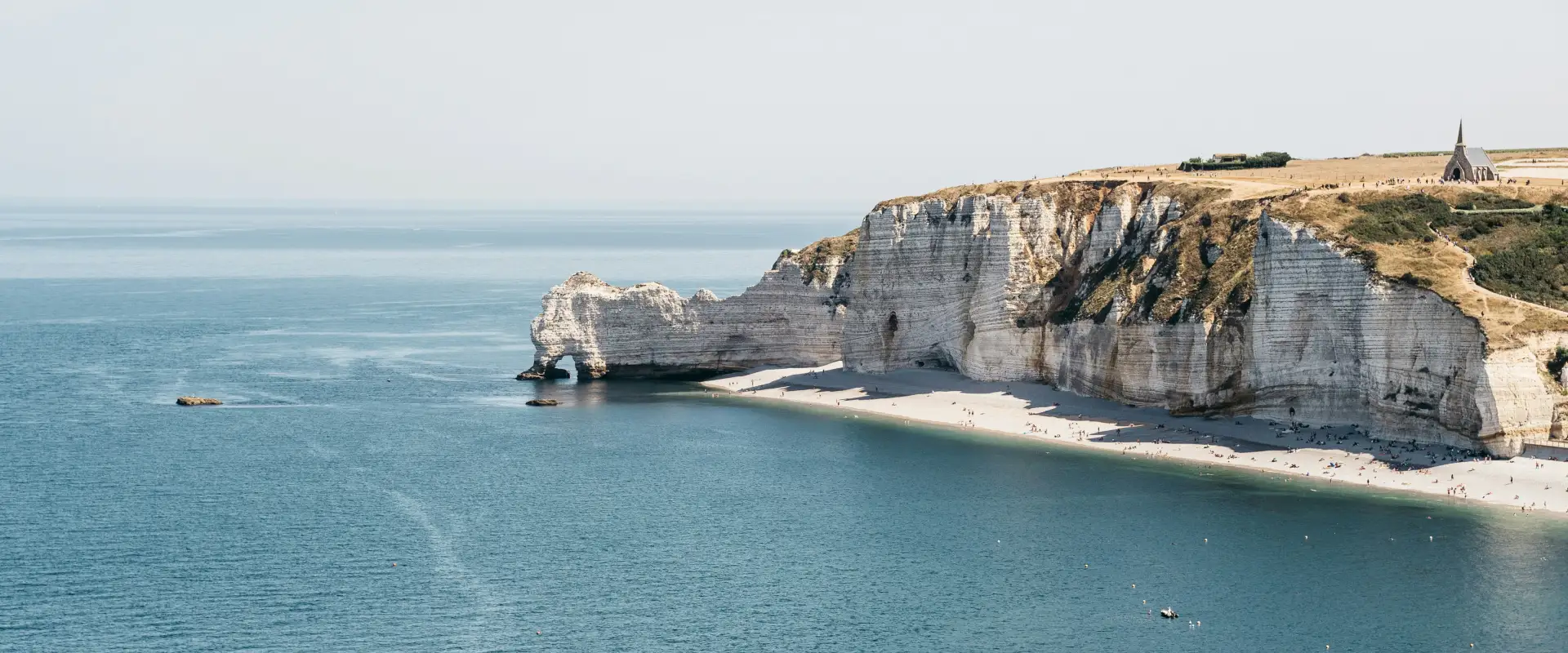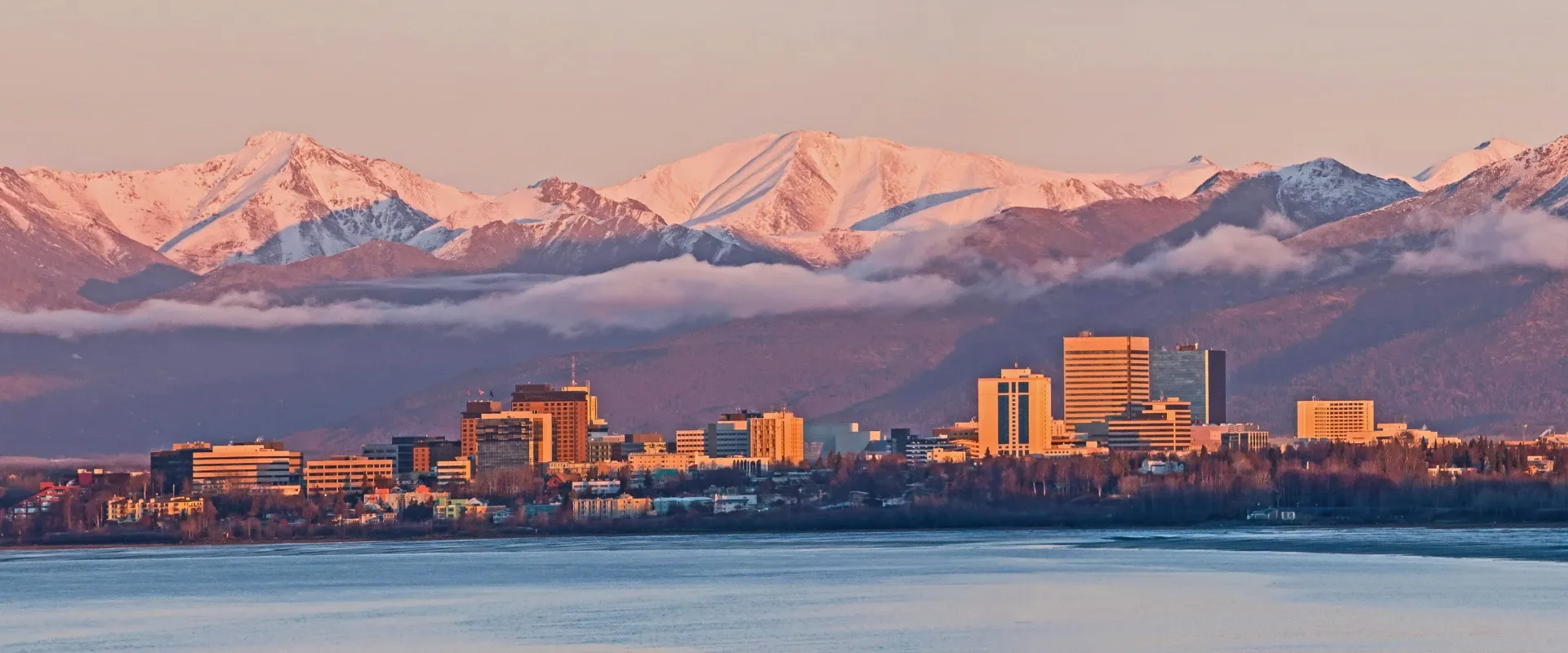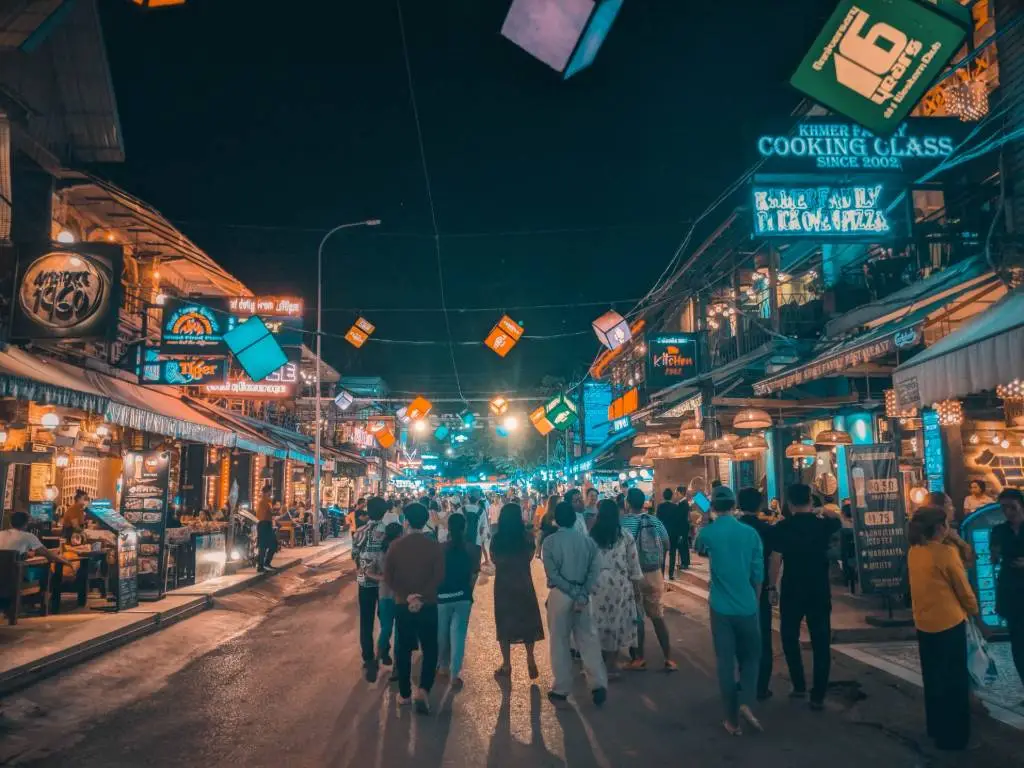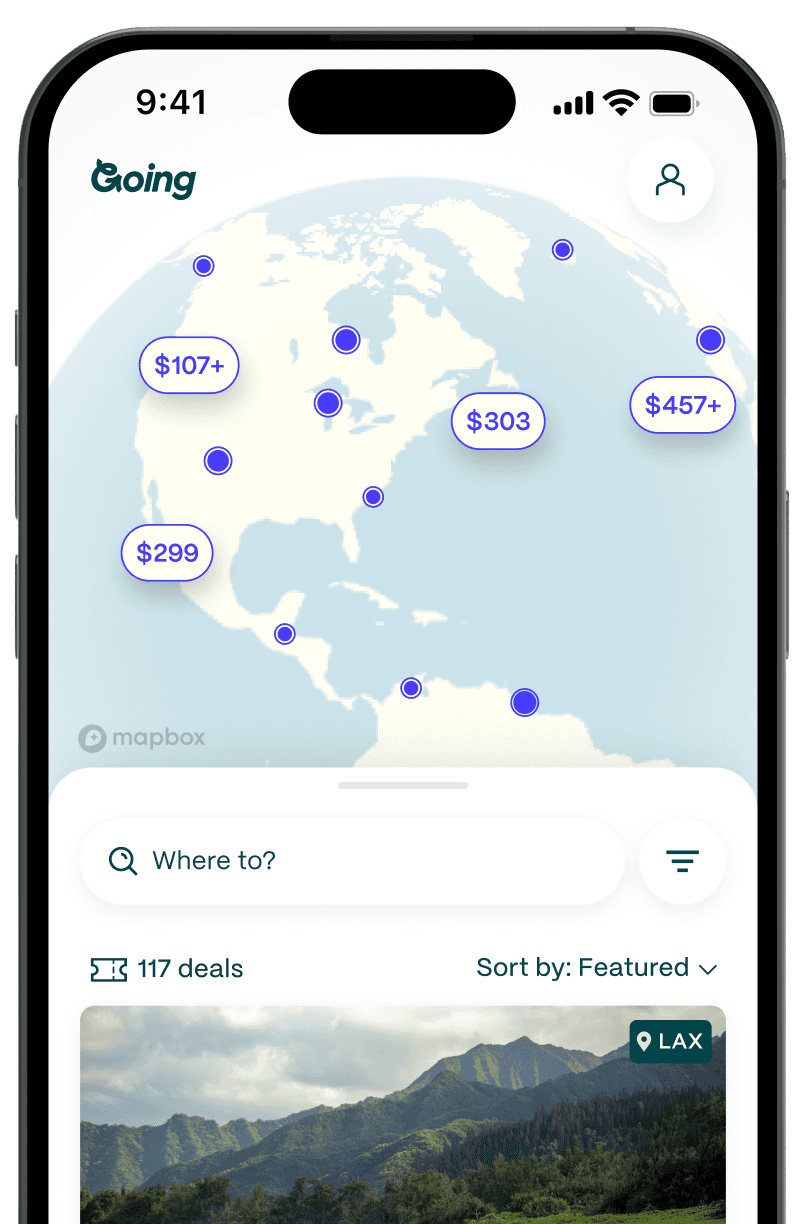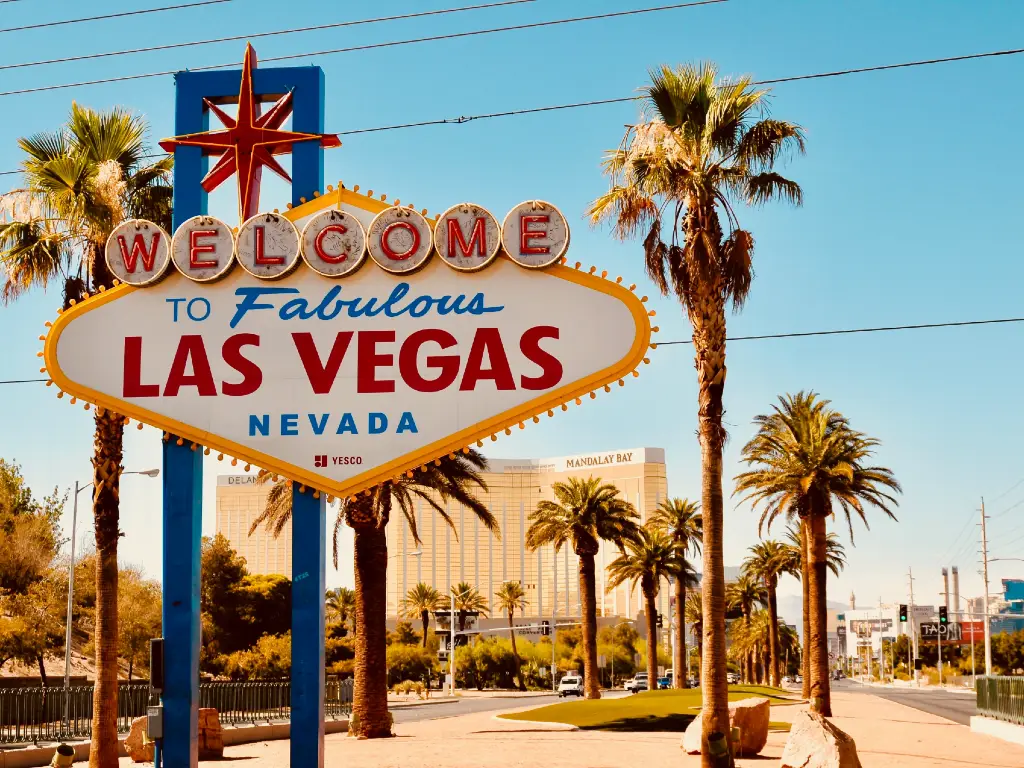
The Travel Guide to Las Vegas
Table of Contents
Welcome to Las Vegas
If you think Las Vegas is only for high rollers and hard partiers, we’d like you to reconsider. It’s not that it isn’t those things—it earned its Sin City nickname—but it’s also so much more, thanks to a virtually endless roster of world-class dining, shopping, live music, spas, and desert attractions. Your trip can be one of nonstop partying, adrenaline pumping adventure, high-class luxury, or super chill relaxing. However you choose to explore Las Vegas, just remember to drink a glass of water every now and again.
Who’ll love Las Vegas
Group getaways, pamper sessions, family-friendly entertainment, celeb chef dining, adventure sports like climbing and bouldering
How to budget for a trip to Las Vegas
Money is a funny thing in Las Vegas. Unlike other destinations, where tourism revenue comes from, well, buying things, in Las Vegas, much of the revenue comes from visitors feeling lucky, and in order to feel lucky, the logic goes, you’ve got to have money that’s burning a hole in your pocket.
Casinos offer hotel rooms that are extremely budget-friendly in the hopes that you’ll feel inclined to spend your dollars at the blackjack table; drinks are often free. (Or are they?) The bottom line is that you can vacation in Vegas without breaking the bank, but you can just as easily spend sky-high. Try to give yourself $150-$200 per day of spending money, and don’t let whatever you gamble with have any effect on that per diem.
Safety considerations
Las Vegas is a very safe city for travelers, from big groups to solo women and all races and genders. The main thing to keep in mind, however, is how easy it can be to let your guard down. With its convivial, almost theme-park-like atmosphere, it’s tough to stay vigilant, especially if the nightlife scene has resulted in any level of alcohol-induced impairment. So while you can and should feel safe in Vegas, keep your wits about you to avoid any pickpocketing.
Weather in Las Vegas
Las Vegas has a desert climate. It gets hot in the summer—very hot—with daytime average temperatures above 80° F for eight months of the year, and highs regularly above 100°F from June through August. In winter, it can be quite cool, with most days in the low 60s or high 50s and temps dropping to the 30s at night. Snowfall is very rare, but not impossible.
When to visit Las Vegas
If you’re a “it’s not the heat, it’s the humidity” person, the dry heat of a Las Vegas summer may appeal to you. This is the time when the city’s pool parties are at their most packed as well. But if the thought of exploring in 90+ degrees is unappealing, opt for March, April, October, or November. December through February can also be lovely, particularly if you’re coming from states in the frigid north of the US. Just check for conventions, as Vegas hosts a lot of them and they can drive up hotel prices.
Money saving tips
Skip the car. You can easily get around in Vegas without one. And while many hotels offer free parking for hotel guests, if you drive to another casino, you may have to pay.
Watch for resort fees. Resort fees are a fact of life in Vegas now and there’s no getting out of them. But be sure to add in the cost of resort fees to your hotel room so you can do a true apples to apples comparison and pick the best value.
Sign up for a players card. If you’re going to gamble, get rewards for it. Sign up for your casinos players card and you can get discounts on shows, spa treatments, and dining.
What to see, do, and eat in Las Vegas

Top 10 things to do in Vegas
- See a big-ticket show, from magic to comedy to live music and more, at one of the Strip’s major venues
- Spend an hour or two at the Neon Museum, where hundreds of historic neon signs from the city’s heyday are on display
- Indulge at Vdara Hotel and Spa for a decadent day of customizable treatment options
- Hop aboard the gondolas at the Venetian Hotel
- Pony up for a cruise at the Hoover Dam on Lake Mead
- Go antiquing in Downtown Las Vegas, and be sure to look for the Centennial Murals while you’re at it
- Immerse yourself in the neon-lit world of the Fremont Street Experience and its mix of attractions, dining options, gambling opportunities, and more
- Tour the intoxicating and massive (14,000 square feet) Bellagio Botanical Gardens
- Catch the Lake of Dreams show at the Wynn
- Shop til you drop at the Fashion Show Mall
The local picks for top attractions and activities in Las Vegas

- Visit Valley of Fire State Park for a stunning landscape, don’t miss the Fire Wave or Mouse’s Tank Road
- Explore the cutting-edge tech on display at Resorts World, consisting of interactive and touch-activated LED installation art
- Snap some pics at the candy-colored cairns known as Seven Magic Mountains
- Take an evening picnic to Symphony Park for a group hang or date night
- Mix things up at Ethel M’s Chocolate Factory & Botanical Garden for a unique pairing (and a tasting session complete with wine for $30)
- Splurge on a helicopter tour from Maverick Helicopters, the ultimate way to see Vegas or the Grand Canyon
- Head to Stadium Swim for the ultimate pool day, with six pools on three rooftop levels and a 40-foot video screen
- Sweat out the toxins at Red Rock Canyon, which is also a world-class bouldering and climbing destination
- Visit Block 16 Urban Food Hall for an array of good eats from iconic spots around the country
- Get out on the water at the Aqua Park floating playground on Lake Las Vegas
What to eat and drink in Las Vegas
Vegas is an utterly world-class destination for dining and drinking. Seemingly every hotshot chef has a restaurant here, so you’ll have your pick from ultra-swanky spots like Nobu to chic but more playful eateries of renown like Momofuku. On the Strip, there’s French, Spanish, Mexican, Chinese, Japanese, Italian, and a whole lot more, but don’t limit yourself just to restaurants within the casinos. If you want to try a bit of everything, there’s always the buffets (some are surprisingly great) and cheap eats like pizza slices and Detroit coney dogs will leave you plenty of cash for the rest of your trip.
- Mothership Coffee offers expertly roasted coffee and specialty drinks
- Golden Tiki is a totally over-the-top tiki bar, featuring crazy drinks, live music, and an infectiously fun atmosphere
- Velveteen Rabbit is a cute, semi-whimsical place to taste some of the best cocktails in the game
- Ramen-ya makes excellent ramen in the Grand Bazaar Shops
- Best Friend offers taco creations from Roy Choi and served with a decidedly Korean flair
- Todd English Olives is a fun, opulent spot to taste delicious Mediterranean food
- Ghost Donkey is a speakeasy-style bar that makes for a great stop after hitting up the rest of the Block 16 Urban Food Bar
- Night + Market is a fantastic option for Thai food
- El Dorado Cantina has some of the best Mexican food in Vegas, serving all-organic and non-GMO dishes 24 hours a day right off the Strip
- Legacy Club at the Circa makes unique and delicious cocktails with a great view
Where to stay in Las Vegas
You’ll be spoilt for choice when it comes to good hotels in Vegas, but area-wise, it’s worth the higher price tags to stick to the Strip. Not only is it the most convenient place to stay, remember: It gets hot in the desert! You’ll be more comfortable getting to/from the attractions if you stay on or near the Strip or downtown Las Vegas. There, you can find a solid hotel for under $50, particularly when promotions are offered, but factor in a resort fee of $20-30 per night. A more posh option will run around $150-$200 per night.
Top Vegas neighborhoods for visitors

The Strip
This is where all the action is and where the major casinos are located, one right next to the other. Stay here if you want the quintessential Vegas experience and don’t plan to rent a car.
Downtown Las Vegas
Home to the Fremont Street Experience pedestrian mall, the Downtown Arts District, the Neon Museum, and the Smith Center, downtown has a great mix of attractions that appeal to both tourists and locals. Bonus: restaurants and casinos here are a bit cheaper.
The suburbs
Suburbs like Henderson, Summerlin, Southern Highlands, and the Southwest Valley are great for families and are very safe, but you’ll need a car and it’s not ideal if you’re planning to visit a lot of casinos. If you’re traveling with a large group and need a vacation rental, or you plan to make the Strip just a small part of your trip, this can be a good option, but otherwise you’ll spend a lot of time on the road.
Recommended hotels in Las Vegas
- Aria Las Vegas (~$98/night): Stylish and high-tech rooms in one of the hippest casino hotels
- NoMad Las Vegas (~$103/night): Swanky rooms and suites with New York style
- The Wynn (~$118/night): Classic elegance in an expansive casino
- The Waldorf Astoria (~$231/night): Modern rooms in a non-gaming hotel in the Hilton family
Getting around in Las Vegas
Public transportation options in Vegas
Vegas is not a destination where renting a car is a necessary evil. After all, traffic is often bad, particularly on the Strip, parking is worse, and if you’ve come to imbibe, you’ll need to do so safely. The Monorail is a good, convenient option for most of your destinations, but give yourself extra time to find the stations, as they’re often tucked away amid the casino chaos. Uber and Lyft are also good options when traffic is light and, like in many US cities, e-bikes are affordable and available to rent throughout town.
When you’re going between attractions in casinos, be sure to give yourself extra time. It can take 5-10 minutes to walk from the door to your final destination within the casino.
Las Vegas airports
The airport in Las Vegas was called McCarran International Airport (LAS) until 2021, when the official name was changed to Harry Reid International Airport. It’s a short five miles from downtown Las Vegas and serves as a focus city for Southwest Airlines, Allegiant Air, Sun Country Airlines, Frontier Airlines, Spirit Airlines, and JSX.
How to Get to Las Vegas from McCarran International Airport (LAS)
The local public bus system, RTC, connects to the Las Vegas Airport on a few of its routes. Travel times vary depending on where you’re going in the area (expect at least a 30-minute trip), and a ticket good for two hours costs $6. Taxis are plentiful at the airport, with drives to The Strip typically taking less than 10 minutes and fares starting at around $25. Both Lyft and Uber are available at the airport, too, with fares to The Strip starting at roughly $10.
Where Else to Go from Las Vegas
Day trips from Las Vegas

Drive 2.5 hours south to Lake Havasu, a beautiful place to get out on the water.
Drive 1.25 hours Northeast to the ghost town known as St. Thomas at the northern tip of Lake Mead. The town was destroyed when the manmade lake was created, but it’s partially visible around the shoreline. Be sure to take a cooler with you so you can enjoy a classic lake day.
Board a 1.25-hour shuttle out to the Mojave Desert, where you can take a 90-minute ATV tour for an unforgettable adventure.
Cool off with some elevation gain at Mount Charleston, 45 minutes northwest of Vegas, nearly 12,000 feet high, and offering over 50 hiking trails (and a ski resort in the winter).
Where else to visit from Vegas
Head to Southwest Utah, 2.5 hours away, to explore the incredible national park at Zion.
Take a trip to Southern California. Vegas is just 4 hours from Los Angeles, Palm Springs, and Joshua Tree, and 5 hours from San Diego.
Drive 2.5 hours northwest of Vegas to Death Valley National Park—not in the summertime, of course—to camp, hike, and/or mountain bike along the otherworldly terrain that’s actually below sea level; the best time to visit is on a full moon, when the bright night sky lights up the desert at night (it’s also great to stargaze when the moon isn’t full).
Drive 2.25 hours east of Las Vegas to the Grand Canyon; the Skywalk attraction is easily accessible when you approach the canyon from this direction.
Books and movies set in Las Vegas
From Casino and Rain Man to Ocean’s Eleven and The Hangover, there are dozens of movies set against the shifting fortunes of Vegas’s casino floors. For a deeper look at the city itself and the lives of the people who live there check out the books The Desert Rose, about an aging showgirl, Delivery Man, about the lives of a group of suburban young people, or The House Always Wins, a mystery set in a downtown Vegas casino.
Previous cheap flights we've found to Las Vegas:
- Boston nonstop to Las Vegas for $179 roundtrip
- Albuquerque nonstop to Las Vegas for $128 roundtrip
- San Diego nonstop to Las Vegas for $198 roundtrip in business class
Save up to 90% on your next flight to Las Vegas—or anywhere—with cheap flights delivered right to your inbox.
Last updated March 14, 2024

